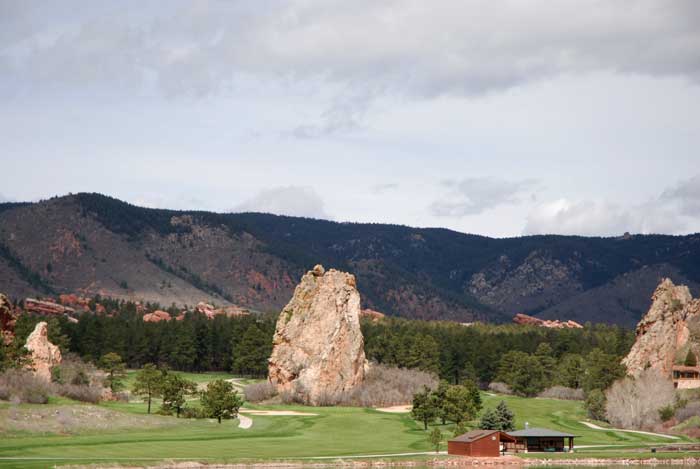| |
SENTINEL ROCK

Overlooking the beautiful Perry Park Country Club
is the majestic 200-foot-high Sentinel Rock. According to Native
American legend, the rock and other stone formations that lie
throughout this area are the remains of an ancient race of giants that
were turned to stone.
In the late 1800s, Sentinel Rock was used as a stopping place for
stagecoaches by people going to Larkspur, where they linked up with
the railroad that connected them with Denver and Colorado Springs.
The rock was a good stopping place because at its base is a cave,
which travelers used as a refuge from rain and snow when needed.
While they waited for the stagecoach, some of them carved their
initials, names, and/or dates into the soft rock in this cave.
This “graffiti” has been preserved to this day.
The history of Perry Park goes back to the earliest days of settlement
in Colorado. Coberly’s Half-Way House, a place to stay for
travelers between Denver and points south, was originally located not
far from here. The Hayden Survey of 1869 called the region
Pleasant Park. John Perry, president of the Kansas Pacific
Railroad, discovered the area while searching for railroad routes; by
the early 1870s he owned 4000 acres here. Later owners decided
to make “Perry Park” a tourist haven. A hotel was built in 1889
at the foot of 300-foot-high Nanichant Rock, and the house that later
became the site of the golf course headquarters (Manor House) was
built in 1891. A dam was built on Bear Creek to create Lake
Wauconda, the lake on the grounds of the golf course.
Today Sentinel Rock is situated near the golfing tee-off of hole 11.
Although a brochure for the country club states that the carvings in
the cave date back to the 1860s, the earliest inscription visible is
one of CCALF(?) CURTIS 1871,” which likely was carved by one of the
pioneering Henry Harper Curtis family of Douglas County. A
nearby inscription reads “H.H. Curtis 1876.” Other carvings with
that same last name are H.B.(?) and Fern; Lotta(?), Marty(?), and
W.F.; and Mabel (and possibly “1913”). Many other surnames are
“written in stone” here, and dates inscribed include 1874(?), 1877(?),
1917, 1922, 1928. In all there are approximately 40
inscriptions that are at least partially readable.
Thanks to Garry O'Hara
|
|

